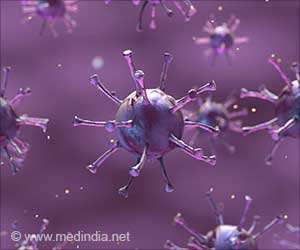With the global surge in cases, the World Health Organization (WHO) has classified EG.5.1, colloquially known as Eris, as a "variant of interest."

EG.5 Initial Risk Evaluation
Go to source). This stands in contrast to earlier variants that escalated ICU admissions and mortality rates. The global health stated that the sub variant was first reported on February 17. While EG.5 may fuel increases in cases, the WHO said it poses a low risk to public health in comparison with other omicron descendants because there is no evidence it is causing more-severe disease.Dr Dan Barouch, director of the Center for Virology and Vaccine Research at Beth Israel Deaconess Medical Center in Boston, US, said there is no evidence that EG.5 infections cause more severe illness than other omicron sub variants, ABC news reported.
EG.5 Transmissibility and Immunity
EG.5 has likely evolved to become more transmissible than its predecessors, however, as evidenced by its prevalence, Barouch said. But he suggested that widespread immunity from a combination of vaccinations and past infections should keep most people safe from severe illness."Collectively, available evidence does not suggest that EG.5 has additional public health risks relative to the other currently circulating Omicron descendent lineages," the WHO said in a risk evaluation.‘Although EG.5 has demonstrated heightened prevalence, a growth advantage, and properties related to evading the immune response, there have been no documented alterations in disease severity up to the present moment. #COVID-19variant’





EG.5.1 has been detected in about 51 countries in total, including South Korea, Japan, Canada, Australia, Singapore, France, Portugal and Spain.In the week beginning June 19, one in 13 cases were down to the COVID-19 variant, the WHO said.The latest data suggests it now accounts for 17.4 per cent of cases -- one in six -- which the WHO described as a "notable rise".However, there has been no increase in hospital or ICU admissions, or death. Although infections are growing in some countries, it's not at a rate that should cause alarm, said James Wood, a professor at the University of New South Wales in Sydney, Australia."EG.5.1 is not a significant issue of itself -- more like the first step on the ladder to the variant that will cause our next wave," he was quoted as saying to ABC news.So far, the symptoms of EG.5 also appear to be the same as previous strains, said Sharon Nachman, chief of the Division of Pediatric Infectious Diseases at Stony Brook Children’s Hospital.
“These include sore throat, runny nose, cough, URI [upper respiratory infection] symptoms, and low-grade fevers.”
Reference:
- EG.5 Initial Risk Evaluation - (https://www.who.int/docs/default-source/coronaviruse/09082023eg.5_ire_final.pdf?sfvrsn=2aa2daee_1)















